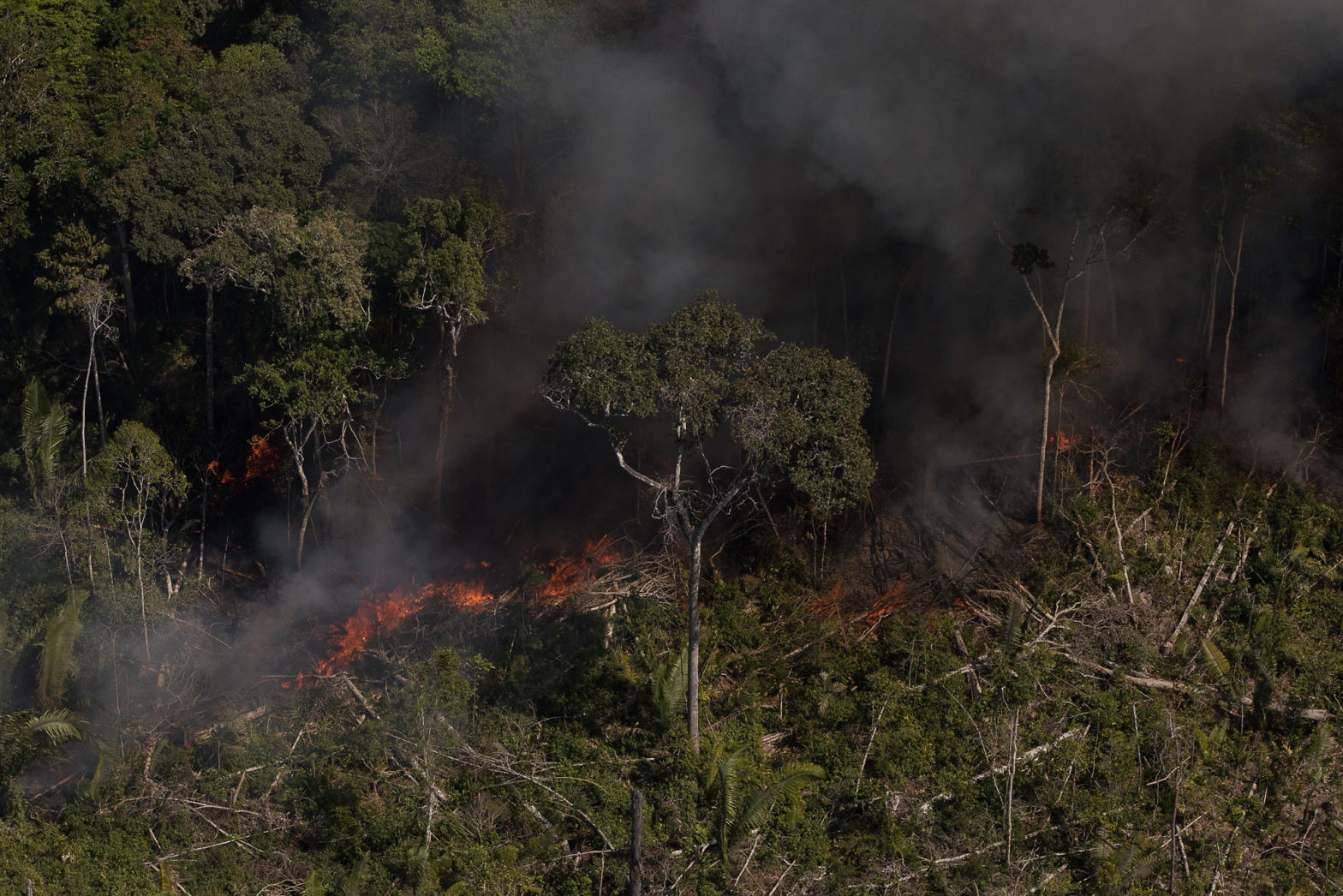Fire and slash-and-burn emissions impact forest health in regions far from where the burning and deforestation occurred. A study begins to measure this effect.
There is an important component in greenhouse gas emissions accounting that is still hidden from emission inventories. Global climate change and deforestation are degrading the vegetation cover of the part of the virgin forest that hasn’t yet been affected directly by deforestation. This forest degradation is not in the accounting. Fire and wildfire emissions impact forest health in regions far from where deforestation has occurred.
A study by IPAM, coordinated by its director Ane Alencar and her team, and by the National Institute for Space Research (INPE), led by scientist Luiz Aragão and collaborators, has begun to quantify how much the degradation of the native forest is emitting into the atmosphere. And the numbers are high.
Undisturbed and unburned forest is being impacted by rising temperatures and reduced rainfall over large areas of the Amazon. In the regions of Santarém, in Pará, and Alta Floresta, in Mato Grosso, the deforestation rate has already exceeded 30% of the region. Combined with a temperature increase of about 2.3°C and a 20% reduction in rainfall, the forest is being stressed and degraded. This affects photosynthesis, which is the mechanism where the forest absorbs carbon in the biomass, and makes the forest lose carbon to the atmosphere via respiration and lower photosynthesis rate. It is very difficult to quantify this kind of emission, but studies using remote sensing, and in situ measurements made with airplanes, show that the forest has stopped absorbing and is now a source of carbon to the atmosphere.
A second mechanism for forest degradation in the Amazon is the effect of fire, especially at forest edges. The extensive forest areas near deforested areas lose their vigor, and start to lose carbon to the atmosphere. According to the MapBiomas Fire product, areas were inventoried over the last 36 years at a high spatial resolution of 30 meters. The reduction of biomass after fire in areas close to burned areas is about 25% in 10 years after the occurrence of fire. We also have the effect of aerosol particle emissions, which can be transported for thousands of kilometers, affecting the radiation balance and cloud properties along the way.
Fires also emit ozone precursors, and ozone is a phytotoxic gas. This affects the primary productivity of the forest by reducing the forest’s ability to perform photosynthesis and capture CO₂ from the atmosphere. Fires in the forest’s burlap (the leaves and branches that lie on the ground surface) are usually not detected by satellites, but also affect forest health. They are slow fires, with low flames, that carry high temperatures to the base of the trees and consume shoots and smaller species, compromising the dynamics of the forest.
Even if we will have zero deforestation in the next few years, this component of degraded forests will continue to emit carbon into the atmosphere for at least a few decades.
Measurements show that forests degraded by fire contain 25% less carbon than non-impacted forests. Even if we will have zero deforestation in the next few years, this component of degraded forests will continue to emit carbon into the atmosphere for at least a few decades. When we take into account direct and delayed emissions, the Amazon has emitted about 1298 Tg of CO2 since 1990, which is equivalent to 15 years of Japan’s annual emissions. IPAM calculations show that late emissions can reach 63% of the direct deforestation emissions.
These emissions are not taken into account in the national inventory of emissions of the Ministry of Science and Technology (MCTI) in Brazil, and standing forests are considered carbon absorbers. This leads to an overestimation of carbon absorptions in the national inventory. Curiously, the IPCC in its emission inventory methods, only recognizes direct emissions from deforestation, that is, clear cutting of forests. The IPCC emission inventory does not account for this effect, because the works of IPAM and INPE are very recent, and limited to the Amazon region.
It is essential to incorporate these “hidden emissions” into the inventory in order to have a more accurate picture of the Amazon’s greenhouse gas emissions.
The IPCC methods have to be standardized taking into account all tropical forests, and there are still no similar studies for tropical forests in Africa and southwest Asia. It is essential to incorporate these “hidden emissions” into the inventory in order to have a more accurate picture of the Amazon’s greenhouse gas emissions. New studies are needed for detailed estimates of the area of degraded forests.
With the advance of climate change, rising temperatures, and reduced rainfall in the Amazon, we have to look at the standing forest, which may be degraded and having its photosynthetic processes affected. We hope to achieve zero deforestation soon, and we can then focus on this important component of delayed emissions.
It is essential that the emission inventories of Brazil’s National Communication to the Climate Convention, and the IPCC inventories take into account this “new” unaccounted source of greenhouse gases that is forest degradation which is already occurring on a large scale. This feedback in the Amazon ecosystem due to the impact of fires and also climate change needs to be further studied by science.
The opinion articles are the author’s own responsibility.



